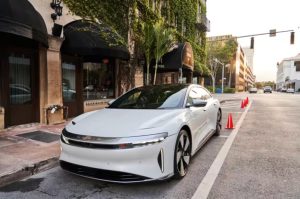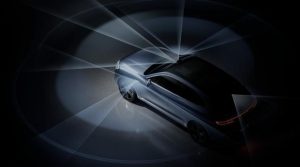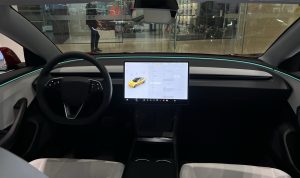The Struggles of SAIC Audi: Can It Find Its Way?
5 min read
In the current Chinese auto market, one of the least successful brands among the “Big Three” German luxury automakers (BBA) is Audi, especially the SAIC Audi, the second joint venture for Audi in China. Its sales figures have been underwhelming, especially compared to its counterparts.
According to SAIC Group’s recent production and sales report, SAIC Volkswagen, which comprises Volkswagen, Skoda, and Audi brands, achieved sales of 120,000 units in September, marking a 7.83% YoY decline. For the first nine months of the year, cumulative sales reached 832,300 units, reflecting a 13.5% YoY decrease. Volkswagen is the top performer, while Audi and Skoda have faced more challenges.
SAIC Audi, as the second joint venture for Audi in China, has been quiet about its official sales figures for quite some time. Reports from various platforms and institutions suggest that SAIC Audi has been struggling in terms of sales. For instance, data based on new car compulsory insurance registration showed that during the first half of the year, SAIC Audi had only 8,450 cars registered, with 1,826 in July and 1,685 in August.
This poor performance is a stark contrast to the strong reputation of the Audi brand, and it raises questions about the issues faced by SAIC Audi in what was initially a promising collaboration. In July, SAIC Group announced a memorandum of understanding with Audi to jointly explore the electric and intelligent mobility space. Audi selected its EV platform for this venture. Can this initiative help SAIC Audi recover from its struggles?
- Challenging Collaboration
In the Chinese auto market, Audi is a well-known and highly regarded luxury brand. However, when people think of Audi in China, they often refer to First Auto Works (FAW) Audi, the first joint venture for Audi in the country. SAIC Audi, often referred to as the “second son,” doesn’t receive as much recognition.
SAIC Audi faced challenges even before its official establishment. Back in November 2016, a leaked photo showed the signing of a memorandum of understanding between Audi and SAIC in Wolfsburg, Germany. This led to protests from FAW Audi dealers who threatened to stop vehicle deliveries. Audi had to compromise and temporarily halt its cooperation with SAIC to appease the FAW Audi dealers. However, Audi remained determined to work with SAIC.
The collaboration faced further setbacks, including compromises with FAW Audi, which reached an agreement with Audi and other parties. As part of the agreement, both FAW Audi and SAIC Audi were to aim for 1 million unit sales in China by 2022. This challenging environment created significant tensions in the collaboration.
In April 2021, SAIC Audi was officially established. It introduced the flagship model, the Audi A7L, and announced that the first deliveries would begin in the first quarter of 2022.
Despite its prestigious background and the initial promise of the collaboration, SAIC Audi’s sales performance has been disappointing. The three models currently available—A7L, Q6, and Q5 e-tron—have faced criticism for perceived shortcomings and lack of differentiation.
A7L, as the debut model, was expected to compete with the BMW 5 Series and Mercedes-Benz E-Class. However, the decision to modify its design, especially the iconic sloping roofline of the Audi A7, led to criticism, making it lose its character and some of its sportiness.
Q6 was criticized for its similarities to the Volkswagen Touareg, despite being a luxury car with a starting price of over 450,000 CNY. Q5 e-tron, an all-electric model, struggled to stand out in a crowded electric luxury vehicle market, where consumers found it lacking compared to its competitors.
The sales numbers for 2022 confirm the struggles of SAIC Audi, with the overall sales reaching 6,280 units, with A7 accounting for 3,801 units, Q5 e-tron at 1,721 units, and Q6 at 758 units.
Comparing SAIC Audi to FAW Audi, the contrast in sales performance is evident. FAW Audi reported over 50,000 units for insurance registration in August alone.
SAIC Audi’s performance reveals a miscalculation about the Chinese auto market. Regardless of whether it’s conventional or electric vehicles, the market has evolved, and Chinese domestic automakers now offer competitive products in various price segments. The allure of the four rings on the grille is no longer enough to sway consumers.
It’s worth noting that SAIC Audi’s long-term underperformance has also raised questions about the capabilities of Jia Mingdi, the former General Manager of SAIC Audi’s Marketing Department, who was often referred to as the “father of SAIC Audi.” In March 2023, he was transferred to another position, and Yang Siyao, the former Executive Director of Marketing at SAIC Volkswagen, took over.
It appears that SAIC Audi, despite showing some signs of growth with the new leadership, still has a long way to go to achieve a transformative turnaround.
- A New Beginning with Electric Mobility?
SAIC Audi has attempted to improve its sales figures by implementing price reductions. In September 2022, SAIC Audi lowered the prices of certain Audi A7L 2.0T models, with the starting price dropping by 20,000 CNY.
In early 2023, SAIC Audi announced price reductions for specific configurations of Audi A7L, Audi Q6, and Audi Q5 e-tron, with reductions of up to 20,000 CNY and optimizations in some configurations.
In March, reports revealed that SAIC Audi launched an employee purchase program with discounts of up to 160,000 CNY for its three models: Audi A7L, Audi Q6, and Audi Q5 e-tron.
However, relying solely on price reductions is not a sustainable long-term strategy. Continuous price cuts can damage the brand’s image, and SAIC Audi requires a substantial transformation.
SAIC Audi’s hope for a resurgence may lie in the electric and intelligent mobility sector. In July, SAIC Group announced a memorandum of understanding with Audi to accelerate the development of new electric vehicle models, catering to the demand for high-end electric and intelligent connected vehicles in China. They intend to jointly develop the next generation of electric vehicles and enter new sub-markets.
Additionally, SAIC Audi’s future electric vehicle models will involve collaboration with Zhiji Auto (Zhi Jie), an electric vehicle platform provider. This is seen as a strategic move that could help boost SAIC Audi’s sales of new energy vehicles and market penetration.
However, the challenge for SAIC Audi, as well as the entire Audi brand, is that they have lagged in terms of electric vehicle deliveries and market share. The pressure is on to demonstrate their capabilities to Chinese consumers, who may not be willing to wait much longer.



